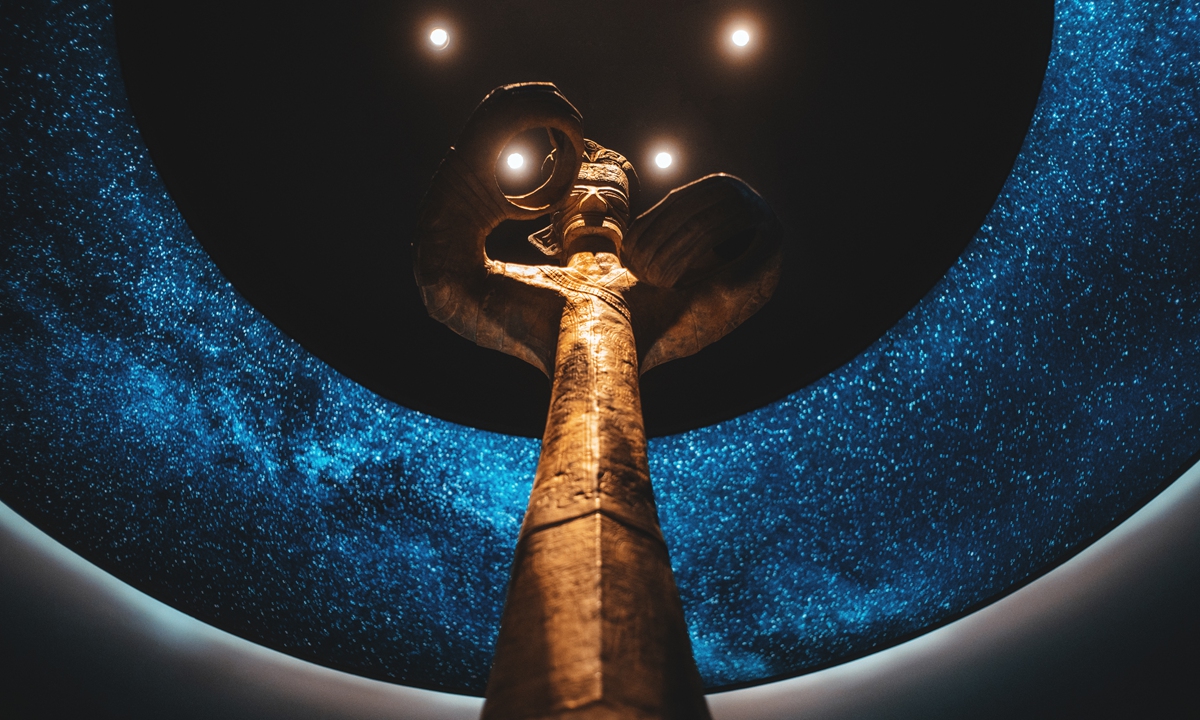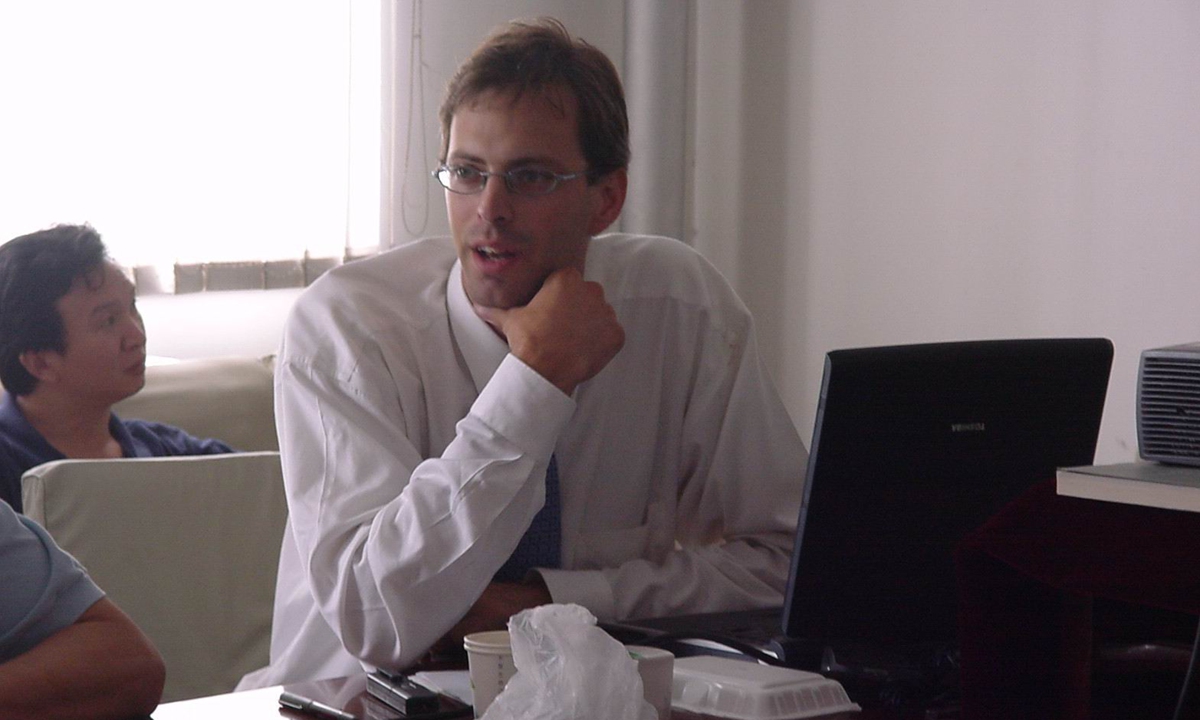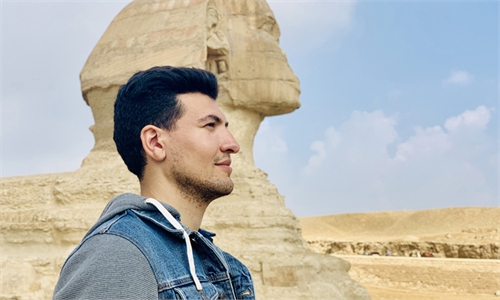ARTS / CULTURE & LEISURE
Harvard professor calls for ‘sense of empathy’ and says ‘similarities can outweigh differences’ in China-US communication

The bronze standing figure at the Sanxingdui Ruins site in Southwest China's Sichuan Province Photo: VCG

Rowan K. Flad Photo: Courtesy of Rowan K. Flad
Editor's Note:Rowan K. Flad, archaeology program director at Harvard University, has been working on several projects with experts in China over the past few years. Able to observe China's archaeology field up close, he has personally witnessed many of the great achievements China has accomplished over the years such as the excavation of the Sanxingdui Ruins site in Southwest China's Sichuan Province.
After graduating from the University of Chicago, Flad became interested in pursuing archaeology as a profession and hoped to learn more about prehistoric archaeology around the world, particularly the early formation of states, a direction that led him to China. He then joined an excellent and growing program in Chinese archaeology at UCLA and became focused on the field once he entered graduate school.
In 2021, he wrote an opinion piece in the Washington Post, "It's a golden age for Chinese archaeology - and the West is ignoring it," which aimed to reveal the "cultural bias" among US media outlets.
The Global Times reporter (GT) Xu Liuliu talks with the renowned professor to discuss topics such as archaeology, Chinese studies in the US, China-US cultural exchanges and more.
GT: There are a number of scholars in the US like you, such as Stephen Owen and Jonathan Spence, who are known around the world for their Chinese studies. Some people in the West are eager to get to know China, from the past till today, but still quite a few aren't interested or refuse to, can you share with us your opinion on this?
Flad: I think that among the academic community there is a widely shared interest in engaging with Chinese studies and understanding how the relevant information from different fields related to the understanding of China can be incorporated into the broader field. For example, in the social sciences, I know that every major discipline, from Anthropology to Sociology to Psychology to History to Political Science to Economics has scholars who engage with Chinese case studies and data and there is a general interest in engaging with those data. This is true in the sciences and humanities as well. However, many people, including academics, have the impression that language and culture barriers make a productive engagement with Chinese material difficult or impossible. This is why eminent scholars such as Owen and Spence have been so important in their fields, because they have served as effective communicators and intermediaries, making the seemingly strange or unfamiliar aspects of Chinese society, history and literature more understandable to an English language audience. Beyond academia, and perhaps in some academic circles as well, within the US there are also ingrained biases that sometimes create disincentives to thoroughly engage with other cultures and histories - not only Chinese but many others as well. Anthropologists like myself take it to be part of our responsibility to "make the strange familiar and make the familiar strange" - hopefully in the process finding ways to expose biases and create engagements with other traditions.
GT: In your opinion piece in the Washington Post, you said "It is a golden age of Chinese archaeology." What makes you say this? What do you think of China's archaeological achievements?
Flad: My opinion piece was stimulated by a question asked to me by a journalist who wanted to know why the Egyptian find I discuss had received media coverage while the exciting finds at Sanxingdui had not been highlighted at all in US news media. That discovery, in and of itself doesn't make this a golden age for archaeology in China, but it is reflective of the growth and sophistication of the field in China today. It is still a misconception among many archaeologists who have no personal experience with Chinese archaeology that the discipline is still quite insular and unsophisticated in China. Those of us who work in China, however, know that this is far from true. For more than two decades, the Chinese government has invested tremendous resources in developing the capacity of the field. There are leading practitioners in many archaeological specialties in China due to the active international collaborations that have been happening since the 1990s. The opening up of the discipline to work with foreign scholars, and the opportunities that Chinese archaeologists have had to go abroad and study and visit have transformed the field. Scholars have returned to China with new abilities and set up research projects, laboratories and programs that are on par with the best in the world. The multiple nationally sponsored projects have stimulated collaboration within China among many major institutes and universities. I think the scientific sophistication of the work that has been done at Sanxingdui is a great example of this spirit of collaboration and sophistication.
GT: In recent years, there have been some barriers between China and the US besides the ongoing pandemic. What do you think the peoples of both countries can do to better understand each other?
Flad: Naturally, as someone who is deeply invested in teaching about China and working with Chinese colleagues and students to understand more about the past of East Asia, I think that both education and publications (both scholarly and popular) about China can play a really important role in ensuring that the populations in our two countries have a sense of empathy for each other and recognize that we have similarities that can outweigh and transcend differences in political institutions and economic systems. Of course there are some barriers that exist in terms of living experiences due to those conditions.
GT: Talking about the discoveries at Sanxingdui: The new discoveries were listed among the top 10 archaeological finds in 2021. Why are these discoveries significant for China and even the world in terms of understanding humanity?
Flad: Sanxingdui is a tremendously important site. The new finds contribute to something that we already started to realize in the 1980s due to previous discoveries, and that is that Sanxingdui represents one of many trajectories toward complex society in early China. The multiregionalism of social development in the region now incorporated into the PRC encourages a recognition that what is China today actually is a modern nation state that is built on the backs of a number of interconnected yet distinct historical stories… The most important archaeological discoveries do this - they make us think about the world differently because they expose something new that we didn't expect. The top 10 discoveries in China each year often have this importance. They illustrate something new, or are good examples that fill in the details of something that we knew about. Perhaps most importantly, they also provide a certification of the high-quality work that is being done on archaeological projects in China, and consequently they encourage archaeologists across the country to strive to do high-quality work in the process of excavation and research.




